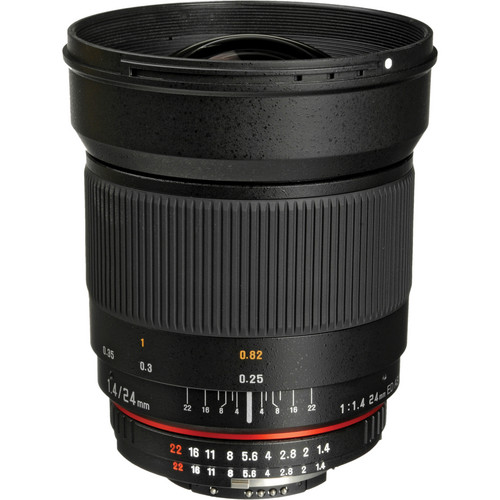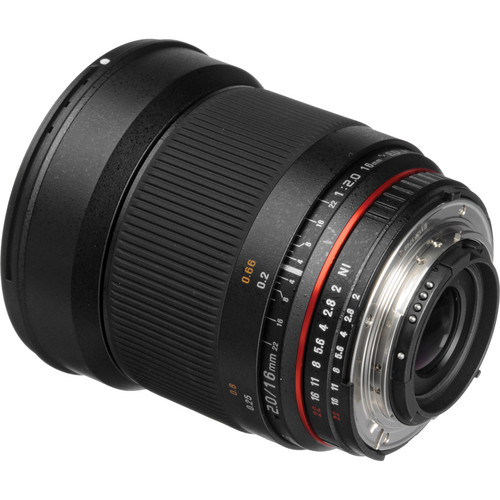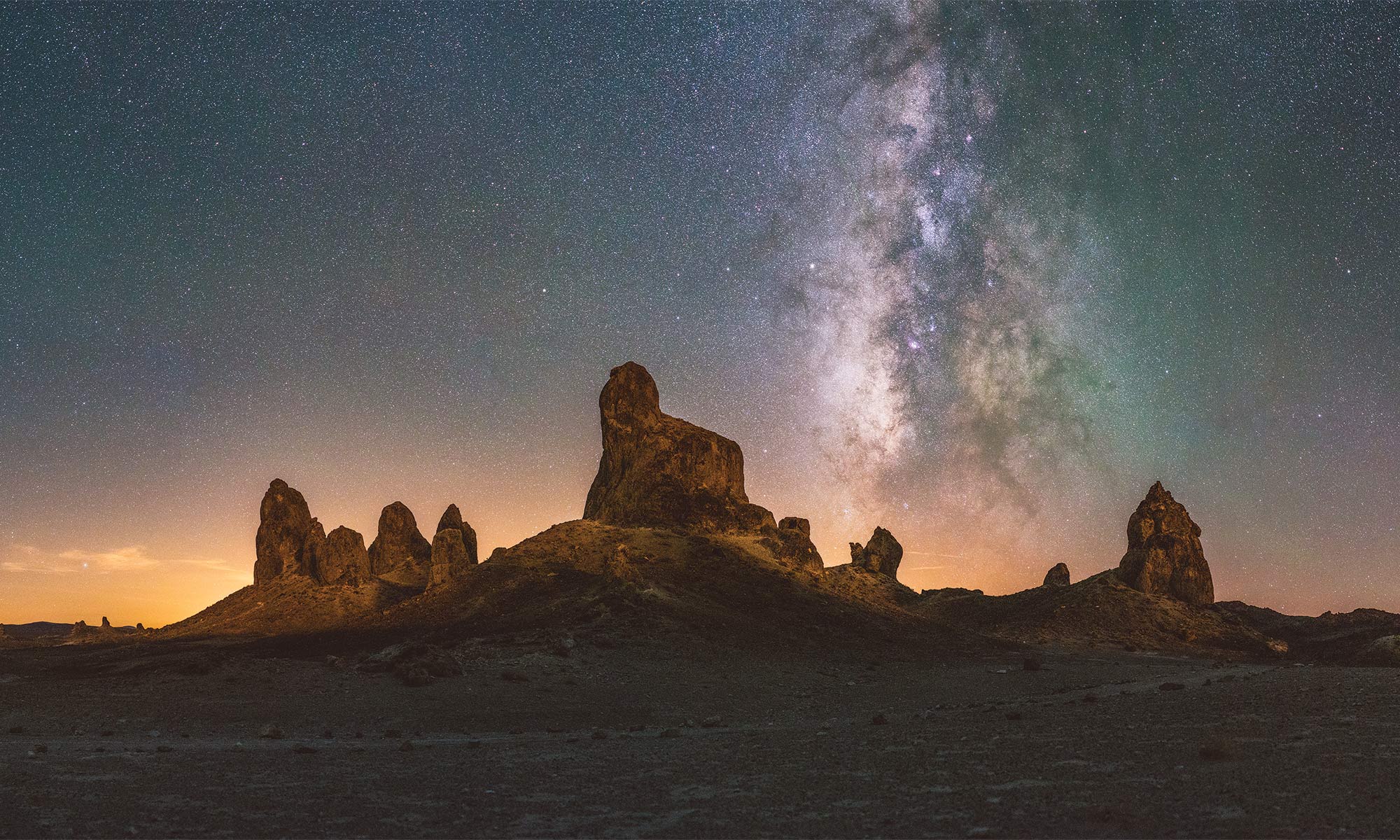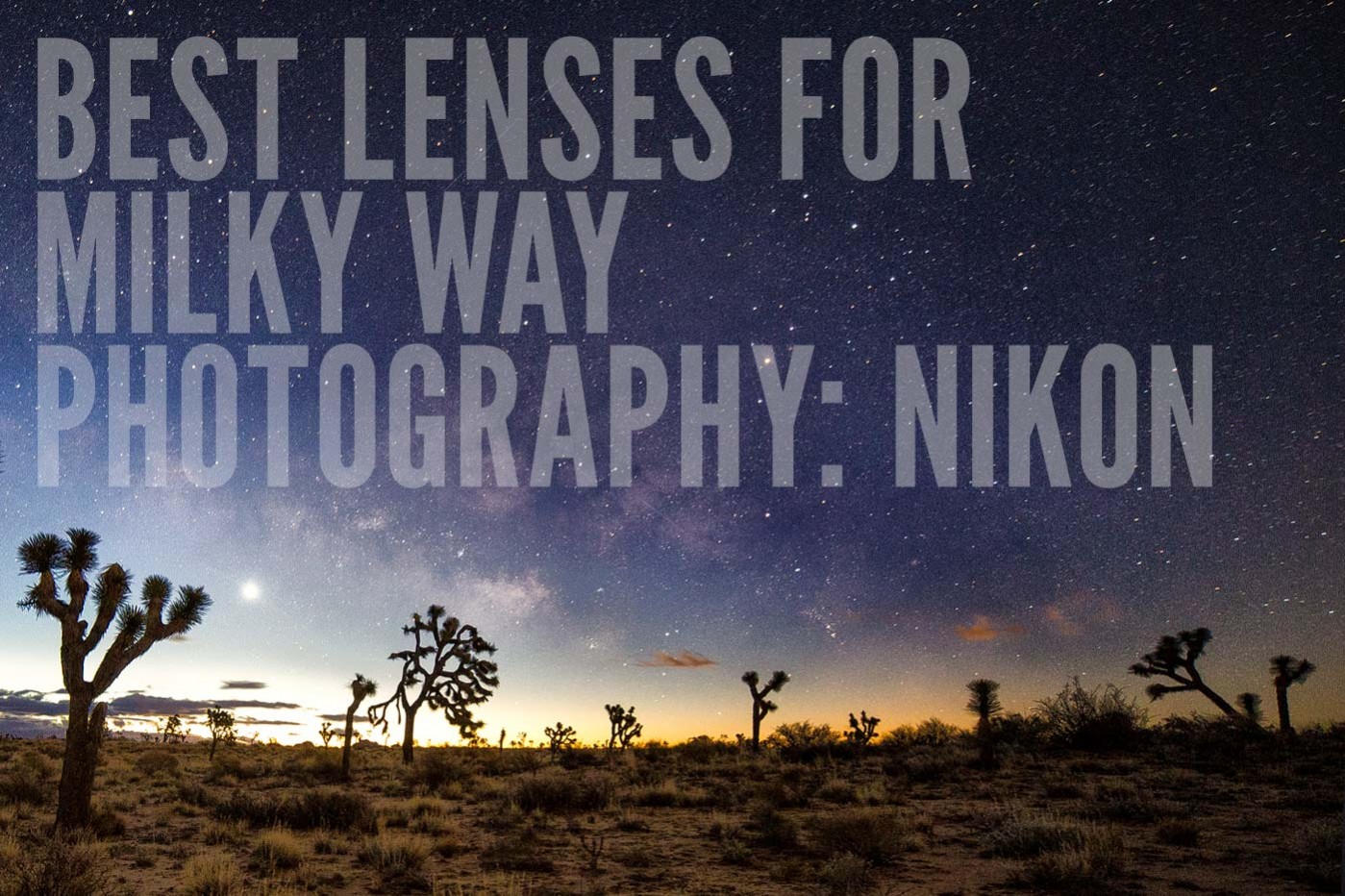If you shoot with a Nikon camera and you want to improve your astrophotography, these are the best lenses for the job.
What is the best lens for astrophotography? The one that collects the most light.
This is a list of the highest scoring lenses for untracked nightscape photography and astrophotography. The score is a direct representation of light gathering capabilities based on the formula:
Score = (aperture area) × (angular area) × (suggested shutter speed)
Where the shutter speed is the longest suggested shutter speed in seconds based on the “500 Rule” (500/focal length). Aperture area is the surface area calculation of the clear aperture of the lens and the angular area is the angular field of view in square radians. This score is a mathematical calculation based purely on some simple physics. It doesn’t account for other considerations like the lens’s build quality or optical aberrations but it’s a good gauge of overall light gathering capability. You can also see the complete list of scores here, complete with calculations and further explanation.
All of the lenses listed here are my personal suggestions for photographers looking to get the absolute best astrophotography results with their camera. If using the given camera mount, these are the lenses that I would use. Most of these lenses are manual focus lenses by Rokinon which also tend to be much more affordable than their autofocus Nikon counterparts. Additionally, most of the Rokinon lenses are sharper and tend to exhibit less coma aberration than their Nikon counterparts. The Rokinon lenses also available with Nikon’s focus confirmation and auto aperture. If you’re willing to learn how to use manual focus, Rokinon lenses are spectacular performers.
If you would like to know more about the thoughts that went into creating this list, please read my article on how to pick a lens for Milky Way photography.
FX (Full Frame and APS-C)

24mm/1.4: Rokinon 24mm f/1.4 ED AS UMC
- The best night photography and astrophotography lens you can buy. Excellently sharp, even wide open at f/1.4. Manual focus.
- Score: 2869
35mm/1.4: Rokinon 35mm f/1.4 US UMC or Sigma 35mm f/1.4 DG HSM Art
- Standard wide angle for tighter landscapes or stitching multiple exposures into larger panoramas. Rokinon is manual focus, Sigma is autofocus.
- Score: 2084
14mm/2.8: Rokinon 14mm f/2.8 IF ED UMC or Nikkor 14-24mm f/2.8G ED AF
- Essential ultra-wide angle for large sweeping landscapes. Rokinon is manual focus, Nikkor is autofocus.
- My full review of the Rokinon 14mm f/2.8
- Score: 1032
DX (APS-C Only)

16mm/2.0: Rokinon 16mm f/2.0 ED AS UMC
- The best combination of wide angle and large aperture. Manual focus.
- Score: 1875
10mm/2.8: Rokinon 10mm f/2.8 ED AS NCS
- APS-C alternative to the Rokinon 14mm/2.8. Excellent for ultra-wide angle landscapes. Manual focus.
- Score: 1184
11mm/2.8: Tokina 11-16 f/2.8 PRO DX II
- Covers the same range as the two previous lenses combined. Excellent super wide angle zoom with autofocus.
- Score: 1149 (at 11mm)
Other Systems
Best Lenses for Milky Way Photography on Canon Cameras
Best Lenses for Milky Way Photography on Fujifilm Cameras
![]()


Hi Ian
I wonder if you could advise me. I own a Nikon d500 would this be suitable for Astro photography and if so what would be the best lens to pair up with it for this type of work.
Many thanks
D500 would fit into the DX category above.
I currently have d3200 and thinking if going to full frame. Which camera in nikon series d850 d750 610 or 600. I want keep budget friendly. And which one for wide angle tokina11 16 or rokinon or something else came at. Any refurbished websites I can buy to get a deal?
When you say budget friendly, the D850 is probably out for you as it is still new and still on various wait lists. Go for a D810 or D750. 810s are going for around $1800.00 USD used.
Can the Rokinon 24mm f/1.4 ED AS UMC hold a filter ? I live in a very highly light polluted area with limited access to Darksky.
Hey there, great page you have here.
I was thinking on buying my firs lens besides the stock, i am new on photography and have a Nikon d3400. I love night sky photography and that is why i bought a camera on the first place. I was wondering between the Rokinon 16mm f2.0 and the Tokina 11-16mm f2.8, i see here that the Rokinon has better score and i don’t really know in what aspects is that measured, but i wonder if that better score is better than the wider angle that the Tokina has?
Thanks
I had the same debate last year. I ended up with the Tokina because of its autofocus that my D7100 can take advantage of. If you don’t plan on upgrading to a camera with the screw drive for autofocus than it’s more or less a toss-up.
The Tokina usually sits lower on the list than the others due to it’s softer edges when at 11mm.
Hi Ian, I want to thank you for taking the time to provide such useful information to your readers. I have come to rely on your articles plenty of times over the years. I’d like to ask for your suggestion:
I recently bought the new NIKKOR 10-20mm f/4.5. I took shots with it last week and was able to get a couple faint glimpses of the Milky Way. I wasn’t too far out of the city so I know light pollution could have been better elsewhere. I shoot with a D3300.
How do you think the NIKKOR 10-20mm f/4.5 compares to the Rokinon 16 f/2.0? I would give up the focal range for a larger aperature prime, if it makes better sense for astrophotography.
I’d appreciate any insight you could offer.
Thank you.
Hi!
2 days ago I posted a question to a fb group and luckily some guy put a link to your site! Wow first of all Thank you for the huge effort this is a true learning site!
I’m new to astrophotography, I have a Nikon D810 and sigma 35mm f1.4 Art..I was thinking of getting a new lens for astro so I have 2 questions:
-Do you think It’s better to get one of the rokinons that you highly rated or just stick with my sigma and do multirow panos? Can I get the same results?
-What are your expectations for the awaited sigma 14mm f1.8 Art?!
Thanks again and Bravo!